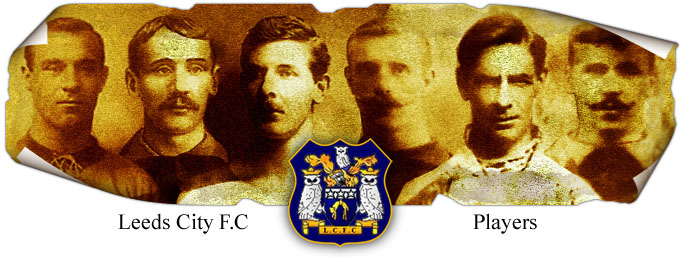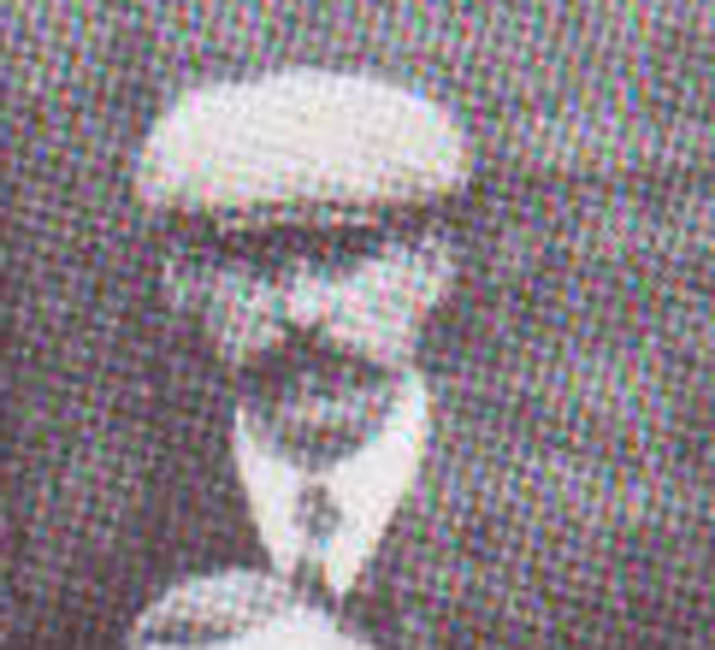

Swift: George Harold (George)
1906-1906 (Leeds City Player Details)
Left Back
Born: Oakengates, Shropshire: 03-02-1870
Debut: v Chelsea (a): 31-03-1906
5’9” 13st 0lb (1906)
George Swift had been appointed as Trainer to the Leeds team and at thirty-six had been
retired for several seasons when pressed into service by Leeds City in an important fixture
at Stamford Bridge on 31st March 1906. City had had a punishing match at Grimsby Town on
17th March. This resulted in them lacking the services of regulars Dickie Morris, Bob
Watson, Fred Hargraves and Charlie Morgan, and Dick Ray, David Wilson and others had all
suffered injuries as the aggressive Grimsby players had dished out the clog. On their return
from Grimsby Morris and Wilson had practically to be lifted out and placed on a luggage
wagon, to be taken to a cab to get home. The Grimsby ordeal left Leeds undermanned to
sustain their late promotion drive at rivals Chelsea’s Stamford Bridge and Gilbert Gillies
was forced to ring the changes. Inside-left John Lavery was brought in from Denaby United to
bolster the City side. As the team travelled to meet third-placed Chelsea, he had only nine
fit players on arriving in London. Bob Watson had broken down in Burnley on his way to the
capital, and the City party sent a telegram to Elland Road summoning reserves.
Unfortunately, the second team had already set off for a fixture in the North East and only
Harry Stringfellow was available to join the squad. Desperate times call for desperate
measures, and the only option was to draft in trainer George Swift for the day. Swift was
still registered as a player and filled in on the left wing, although it was three years
since he had played any first-team football and he did little to suggest there would be a
long term revival of his playing career. Gillies had already had to re-jig his formation
with Harry Singleton playing for the first time as a centre-forward, and early on Dick Ray
sprained his knee. He had to be withdrawn, requiring Swift to revert to the full-back role
he had been accustomed to. City fought bravely to keep the score-line blank for the first
twenty minutes until Ray suffered his injury in the move which led to Chelsea breaking the
deadlock. The Londoners eventually ran out easy 4-0 winners. Swift had started his career
with St George's Swifts and in 1885 he joined Wellington Town. He then played for Wellington
St George's, and had trials at Stoke in 1886. In 1888 he moved to Crewe Alexandra before he
finally made the Football League when he joined Wolverhampton Wanderers in August 1891. He
was soon established at Left Back and scored one goal in fifty-nine League appearances, but
it was in the F.A. Cup where he played seven games that he had his first success. He was
part of the Wolverhampton Wanderers team that lifted the F.A. Cup on 25th March 1893 when
they beat Everton 1-0 at Fallowfield Manchester, in front of a crowd of 45,000, with a
second half goal from Centre half and Captain, Harry Allen. He moved to Second Division
Loughborough Town before the start of the 1895-96 season and became the only player ever to
gain a representative honour for the club when he was selected at Left Back for the Football
League against the Irish League at the Victoria Ground, Stoke-on-Trent, in November 1895. He
had a nine-carat gold and enamel medal, awarded to him following the game He later put it up
for auction but it failed to make its reserve price even though Sotheby's had hoped it would
make £500. It was described as: "It's a beautifully-enamelled medal with the crest of the
two countries showing the three lions for England and the Irish harp." After scoring once in
twenty-six League appearances, he joined Second Division Leicester Fosse in August 1896 and
was installed as Captain and became a virtual ever-present for the next six seasons and
scored five goals in one hundred and eighty-six League appearances and scored twice in
fourteen F.A. Cup ties while at Filbert Street. In June 1902 he joined First Division Notts
County and played sixteen League games before retiring. He joined Leeds City as Trainer in
1904, being forced to make a temporary one game comeback in a time of need before becoming
Secretary of Chesterfield from summer 1907 until May 1910. He was not successful at
Saltergate and in the first season they were forced to apply for re-election and were
successful. The following season they again faced re-election and this time failed. He did
guide them to the Midland League Championship but left in May 1910. He became
Secretary-Manager of Southampton in April 1911. He spent £820, a lot of money in those days,
recruiting eleven new players in the first six weeks he was there, in an effort to improve
the team which had languished near the foot of the Southern League. They finished sixteenth
at the end of the season and Swift left in April 1912. He died in 1956.
| Appearances | Goals |
| League 1 | 0 |
| |
| |
| |
| |